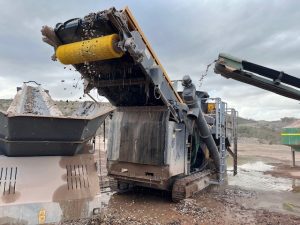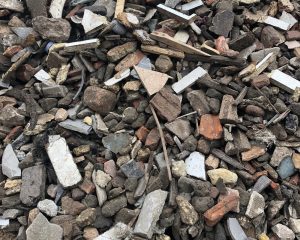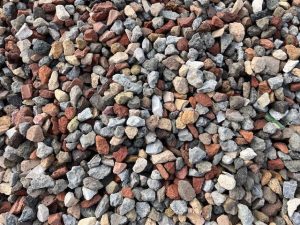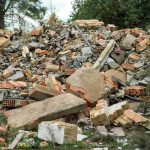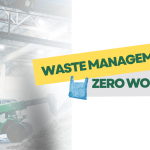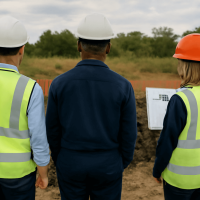Leading the Way in Sustainable Waste Management
Peel Resource Recovery (PRR) is proud to announce it has received $250,000 in funding from the Waste Avoidance and Resource Recovery Account, administered by the Waste Authority WA, to implement a Material Density Water Flotation Separator (MDWFS) — a major advancement in construction waste recycling for Western Australia.
This investment will help Peel Resource Recovery improve the efficiency, quality, and sustainability of its recycling operations, turning contaminated materials into valuable resources and reducing the amount of waste sent to landfill.
“This funding allows us to take another step forward in delivering high-quality recycled products while protecting our environment,” said Mark McDonald, Project Manager at Peel Resource Recovery.
About the Material Density Water Flotation Separator
The Material Density Water Flotation Separator uses water-based gravity separation technology to remove light fraction contaminants — such as wood, plastic, polystyrene, and cardboard — from heavier materials like concrete, brick, and asphalt.
This innovative process allows PRR to:
- Recover up to 75% more recyclable material from construction and demolition waste.
- Improve the quality of recycled crushed concrete (CRC) product
- Increase annual output by 15,000 tonnes
- Create new local employment opportunities
By integrating this equipment into PRR’s existing processing system, the facility will be able to transform previously unusable material into Main Roads WA–compliant recycled concrete road base, directly supporting sustainable infrastructure development across the South West.
Reducing Landfill and Improving Recycling Efficiency
Currently, a portion of the 20–90mm fraction from PRR’s trommel screening process is heavily contaminated with non-recyclable materials, making it unsuitable for reuse. With the MDWFS in place, this contaminated fraction will be reprocessed instead of landfilled, significantly reducing waste volumes.
Every tonne recovered represents:
- Less landfill space used
- Lower carbon emissions from reduced trucking
- More sustainable construction materials for Western Australia’s growing infrastructure needs
This project supports the goals of the Waste Avoidance and Resource Recovery Strategy 2030, which emphasises waste avoidance, material recovery, and responsible environmental management.
Supporting Western Australia’s Circular Economy
The circular economy is about keeping resources in use for as long as possible — and PRR’s new flotation separator plays a key role in this. By recovering additional inert materials from construction and demolition waste, PRR helps reduce reliance on virgin quarry resources, which are both limited and energy-intensive to extract.
This means fewer heavy trucks on the road, less quarrying, and a cleaner, more efficient recycling process that benefits both the environment and local communities.
With government support, PRR is helping drive Western Australia toward a low-waste, circular economy where materials are reused, repurposed, and reprocessed — not buried in landfill.
Economic, Environmental, and Community Benefits
The MDWFS project delivers multiple benefits that extend far beyond PRR’s operations:
Environmental Benefits:
- Diverts an estimated 25,000 tonnes of inert recyclable material from landfill annually
- Reduces emissions and transport-related pollution
- Protects soil and groundwater from contamination
Economic Benefits:
- Creates one additional job in recycling operations
- Boosts annual CRC output and revenue potential
- Reduces operational waste disposal costs
Community Benefits:
- Supplies local councils and contractors with cost-effective recycled materials
- Promotes sustainable construction practices across WA
- Demonstrates industry leadership in resource recovery innovation
Technology and Equipment Selection
After evaluating several systems worldwide, PRR selected the WIMA HDS-S unit — a proven, energy-efficient model that has been used internationally since 2004.
The system will be custom-modified locally with an added fan extraction system and brush sweep mechanism to optimise separation performance for Australian waste material conditions.
Despite its advanced capability, this model remains a cost-effective choice, allowing PRR to achieve maximum environmental and operational return on investment while maintaining affordability.
Strengthening WA’s Recycling Infrastructure
As the only licensed construction and demolition recycling facility in the South West, Peel Resource Recovery already processes more than 200,000 tonnes of C&D waste annually across its operations in Wellesley, Pinjarra, and Busselton.
Current Facility Capacity:
- Crushing of building material: 65,000 tonnes per year
- Solid waste depot: 300,000 tonnes per year
- Inert landfill site: 115,000 tonnes per year
With the new MDWFS, PRR expects to increase annual throughput by 15,000 tonnes, while improving product quality and meeting strict Main Roads WA standards.
This project also supports initiatives like Main Roads’ “Roads to Reuse” program, which encourages the use of recycled construction materials in road infrastructure — a cornerstone of sustainable development in Western Australia.
Before and After Water Bath :
Acknowledgement
This project is supported by the Government of Western Australia through the Waste Avoidance and Resource Recovery Account and administered by the Waste Authority WA.
Peel Resource Recovery gratefully acknowledges the Waste Authority’s support in funding this initiative, which enhances the state’s recycling capacity, creates local jobs, and contributes to a cleaner, greener future for Western Australia.
About Peel Resource Recovery
Peel Resource Recovery is a Western Australian leader in construction and demolition waste recycling and waste management services. Operating licensed facilities in Wellesley, Pinjarra, and Busselton, PRR specialises in:
- Construction waste recycling
- Crushed concrete and aggregate production
- Resource recovery and landfill diversion
Through innovation, investment, and sustainability, PRR continues to help Western Australia achieve its waste reduction and circular economy goals.
Learn more:


